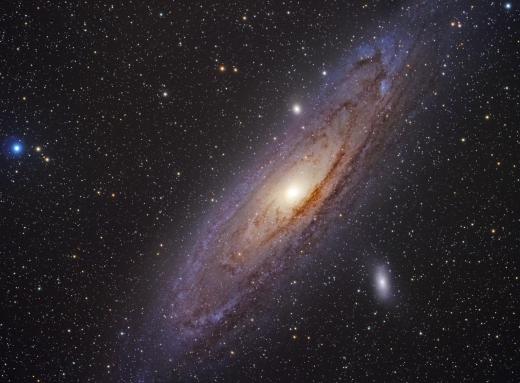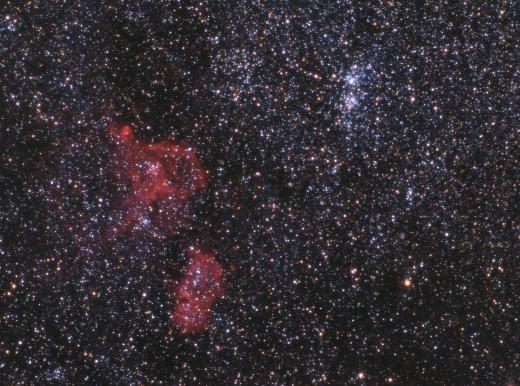What is the Local Group?
 Michael Anissimov
Michael Anissimov
The Local Group of galaxies are the Milky Way's local gravitational family. The Local Group consists of over 30 galaxies spread across a region 10 million light years in diameter. Its three centerpieces are the Milky Way Galaxy, Andromeda Galaxy, and Triangulum Galaxy. Accompanying these galaxies are dozens of small satellite galaxies, one with only 100,000 stars, in contrast to the Milky Way's 200 - 400 billion stars. Some of these satellites, called dwarf galaxies, include the Large Magellanic Cloud, Small Magellanic Cloud, Canis Major Dwarf, Ursa Minor Dwarf, and Draco Dwarf
The Local Group's center of gravity is located somewhere between the Milky Way Galaxy and Andromeda Galaxy, which are about two million light years from each other. These galaxies may collide in two billion years to form a large elliptical galaxy. Because the Andromeda galaxy is moving towards the Sun at about 300 km/s (186 miles/sec.), it is one of the few blue shifted galaxies in the universe from our vantage point. Most galaxies are red shifted because the expansion of the universe stretches the intervening light and increases its wavelength, making it redder.

The Andromeda Galaxy has substantially more stars than the Milky Way Galaxy. The last estimate, made with images taken by the Spitzer Space Telescope, estimate Andromeda's star count at around 1012 (one trillion) stars. Despite its lower star count, the Milky Way Galaxy may in fact by the more massive of the two, because of a dark matter halo. Dark matter is invisible matter that only interacts with traditional matter by means of its gravitational pull.

The Local Group is itself embedded within the Virgo Supercluster, which contains about 100 groups of galaxies similar in size to the Local Group, called Clusters. The Local Group is moving towards the central cluster, called the Virgo Cluster, which has between 1300 and 2000 galaxies. The Virgo Supercluster as a whole is rapidly moving towards a cosmological feature called the Great Attractor, a localized concentration of tens of thousands of galaxies between 150 million and 250 million light years distant. On the largest scale, the universe is expanding and every galaxy will eventually move apart.
AS FEATURED ON:
AS FEATURED ON:












Discuss this Article
Post your comments